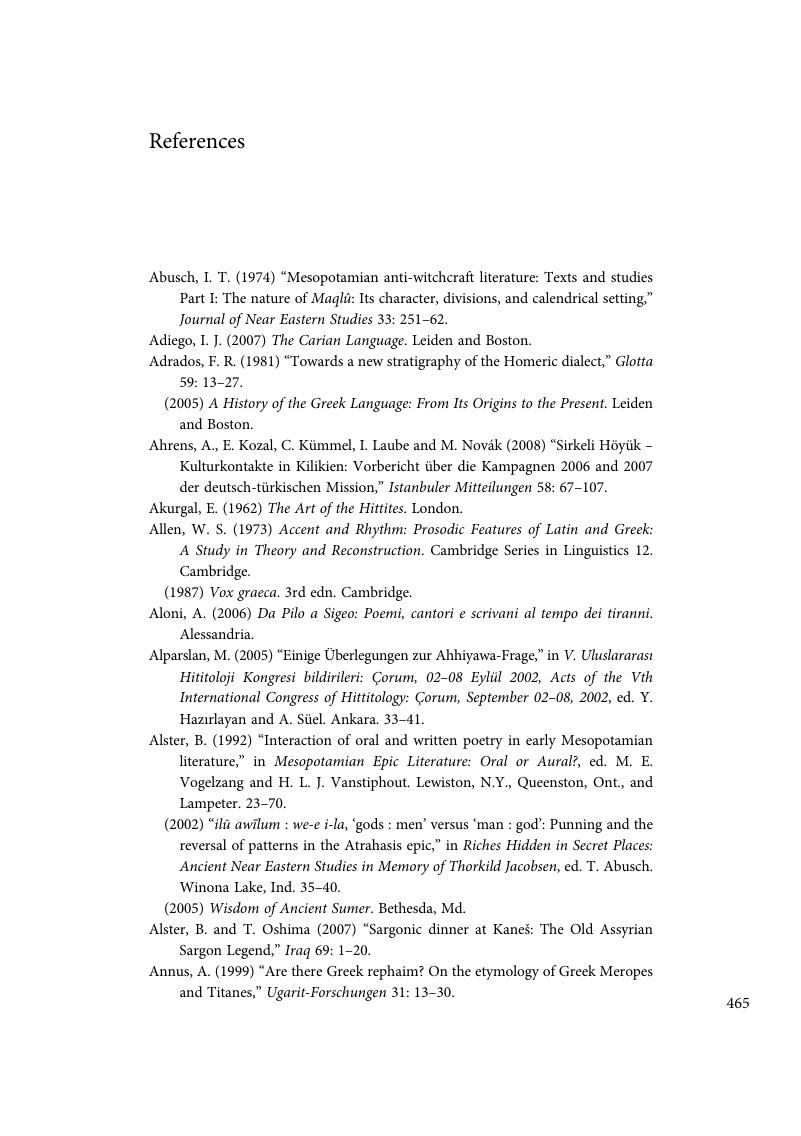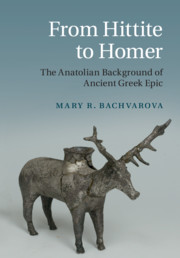Book contents
- From Hittite to Homer
- From Hittite to Homer:
- Copyright page
- Dedication
- Contents
- List of maps
- List of figures
- List of tables
- Book part
- Glossary
- Notes on the text
- Maps
- Additional material
- 1 Introduction
- 2 Hurro-Hittite narrative song at Hattusa
- 3 Gilgamesh at Hattusa: written texts and oral traditions
- 4 The Hurro-Hittite ritual context of Gilgamesh at Hattusa
- 5 The plot of the Song of Release
- 6 The place of the Song of Release in its eastern Mediterranean context
- 7 The function and prehistory of the Song of Release
- 8 Sargon the Great: from history to myth
- 9 Long-distance interactions: theory, practice, and myth
- 10 Festivals: a milieu for cultural contact
- 11 The context of epic in Late Bronze and Early Iron Age Greece
- 12 Cyprus as a source of Syro-Anatolian epic in the Early Iron Age
- 13 Cultural contact in Late Bronze Age western Anatolia
- 14 Continuity of memory at Troy and in Anatolia
- 15 The history of the Homeric tradition
- 16 The layers of Anatolian influence in the Iliad
- Book part
- References
- Subject index
- List of Hittite texts by CTH number
- Book part
- Concordance of tablets from Ugarit
- References
References
Published online by Cambridge University Press: 05 September 2016
- From Hittite to Homer
- From Hittite to Homer:
- Copyright page
- Dedication
- Contents
- List of maps
- List of figures
- List of tables
- Book part
- Glossary
- Notes on the text
- Maps
- Additional material
- 1 Introduction
- 2 Hurro-Hittite narrative song at Hattusa
- 3 Gilgamesh at Hattusa: written texts and oral traditions
- 4 The Hurro-Hittite ritual context of Gilgamesh at Hattusa
- 5 The plot of the Song of Release
- 6 The place of the Song of Release in its eastern Mediterranean context
- 7 The function and prehistory of the Song of Release
- 8 Sargon the Great: from history to myth
- 9 Long-distance interactions: theory, practice, and myth
- 10 Festivals: a milieu for cultural contact
- 11 The context of epic in Late Bronze and Early Iron Age Greece
- 12 Cyprus as a source of Syro-Anatolian epic in the Early Iron Age
- 13 Cultural contact in Late Bronze Age western Anatolia
- 14 Continuity of memory at Troy and in Anatolia
- 15 The history of the Homeric tradition
- 16 The layers of Anatolian influence in the Iliad
- Book part
- References
- Subject index
- List of Hittite texts by CTH number
- Book part
- Concordance of tablets from Ugarit
- References
Summary

- Type
- Chapter
- Information
- From Hittite to HomerThe Anatolian Background of Ancient Greek Epic, pp. 465 - 564Publisher: Cambridge University PressPrint publication year: 2016



